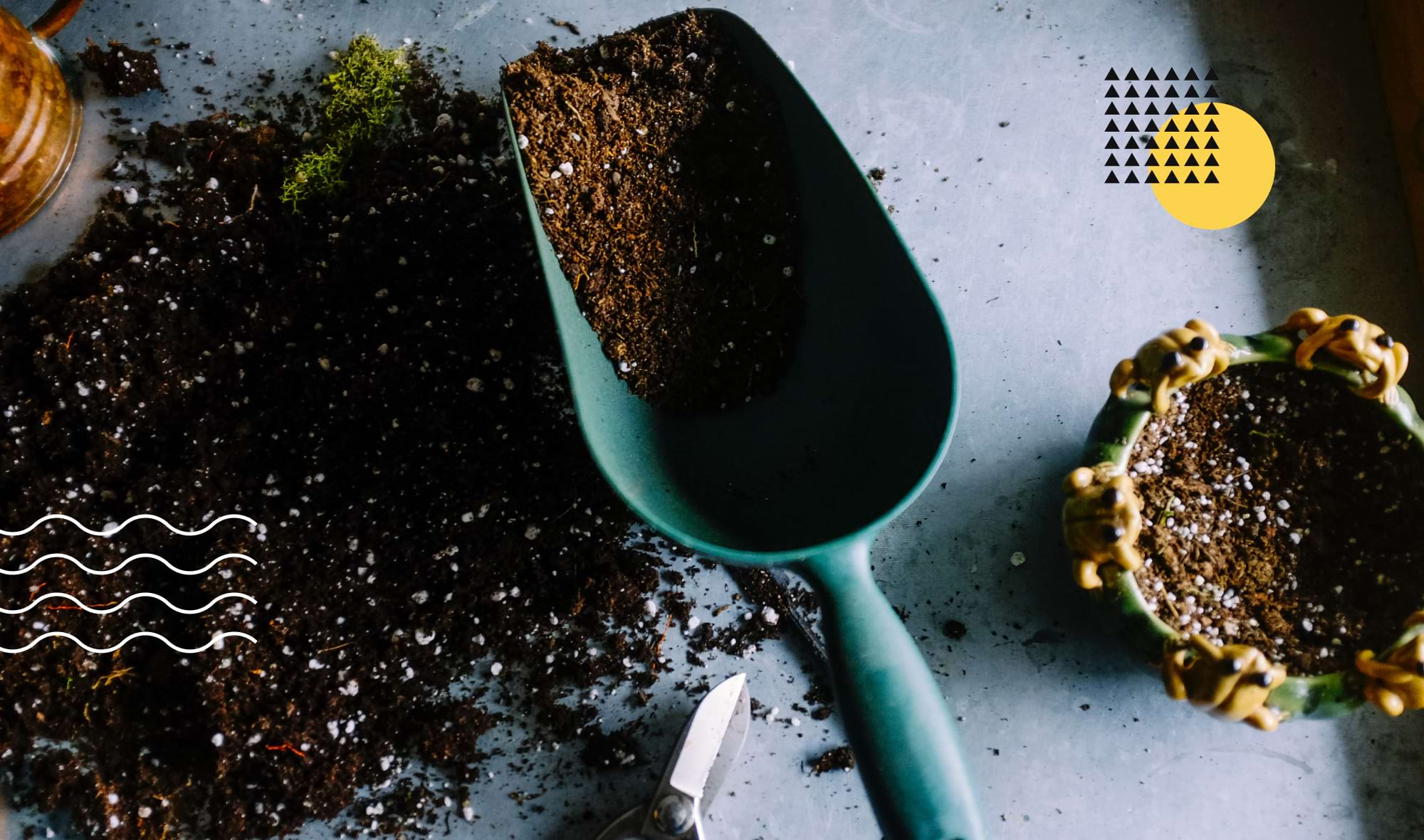Maximizing your spring garden: how to plant shrubs and grass seed like a pro
By HeyHome • May 22, 2023

Spring is a wonderful time of year to start thinking about your garden and how to make the most of the upcoming growing season. One of the key ways to enhance the beauty and health of your garden this warm season is by planting new shrubs and grass seeds. Not only do these plants add visual appeal, but they also provide environmental benefits, such as preventing soil erosion and supporting local wildlife.
Planting shrubs and grass seed in the spring is particularly advantageous because it allows these plants to establish strong root systems and take advantage of the warmer temperatures and longer daylight hours. In this post, we will share tips and tricks on how to plant shrubs and grass seed like a pro, including the best practices for soil preparation, planting techniques, and maintenance.
Whether you're a seasoned gardener or just starting out, this post will provide valuable insights on how to maximize your spring garden and create a beautiful outdoor space that you can enjoy all season long.
Join our newsletter
Stay on top of the latest in landscaping and lawn care with one valuable tip right in your inbox every Saturday morning.
Warm-season grasses

If you're looking to plant warm-season grasses in regions with hot summers and mild winters, three of the most common choices are Bermuda grass, Zoysia grass, and St. Augustine grass. Each of these grasses has its own unique characteristics, benefits, and drawbacks.
Bermuda grass
Bermuda grass is a popular choice for lawns and sports fields because of its drought tolerance, resilience, and fast growth. It is a low-maintenance grass that can withstand heavy foot traffic and requires less water than other warm-season grasses. However, Bermuda grass has a tendency to become invasive and can be difficult to control, making it less suitable for smaller lawns or areas where containment is important.
Zoysia grass
Zoysia grass is a slower-growing grass that produces a dense, lush lawn with a fine texture. It is also drought-tolerant and disease resistant, making it a low-maintenance lawn option for homeowners. Zoysia grass performs well in both sun and shade and is less likely to become invasive than Bermuda grass. However, its slow growth means that it may take longer to establish a full lawn, and it can be more expensive than other grass types.
St. Augustine grass
St. Augustine grass is a popular choice for its shade tolerance and attractive, dark green color. It is also a fast-growing grass that can tolerate any soil temperature, high humidity and moisture. However, St. Augustine grass requires regular watering and is susceptible to disease, making it a high-maintenance option. It also has a shallow root system that can be easily damaged by foot traffic.
Late spring shrubs

Late spring is the best time to plant shrubs in your garden, offering numerous advantages and benefits that can help to create a beautiful and thriving outdoor space.
Lantana (Lantana camara)
Lantana is a popular choice for its colorful blooms, which can range from yellow and orange to pink and purple. It is a low-maintenance shrub that can withstand hot, dry conditions and is attractive to butterflies and hummingbirds. However, lantana can become invasive and may require regular pruning to keep it under control. It can also be toxic to pets and livestock if ingested.
Firebush (Hamelia patens)
Firebush, also known as Hamelia, is another attractive option for a fall or late spring planting. It produces red or orange tubular flowers that are also attractive to hummingbirds and butterflies. Firebush is a drought-resistant shrub that can handle full sun or partial shade, and it requires minimal maintenance once established. However, it may not be suitable for smaller gardens due to its potential to grow up to 10 feet tall and wide.
Texas sage (Leucophyllum spp.)
Texas sage, also called Leucophyllum, is a drought-tolerant shrub that produces attractive purple or pink flowers in early summer. It is low-maintenance and can withstand hot, dry conditions, making it a great choice for gardens in arid regions. However, Texas sage may not be as hardy in areas with colder winters and may require some protection during the colder months.
Join our newsletter
Stay ahead of the curve in all things outdoor.
Get the inside scoop on the latest landscaping, lawn care, and fencing trends with 1 actionable tip every Saturday morning.
3 steps to plant grass seed and shrubs
Planting shrubs and grass seed can be an exciting project for gardeners of all levels. By following a few simple steps, you can help your plants establish and grow into healthy and beautiful additions to your outdoor space.
Step 1: Planning your garden
The location of your garden is crucial to the success of your plants. Make sure the area you choose receives adequate sunlight and is protected from harsh winds or extreme temperatures. Determine if your top soil is well-drained and if it contains any nutrients or contaminants that may affect plant growth. Also, consider the size and layout of your garden, taking into account any existing structures or natural features.
Once you have chosen your location, it's essential to evaluate the soil quality and make any necessary amendments to create the ideal growing environment. Take a soil sample and have it tested for pH, nutrient levels, and organic matter content. Based on the results, you may need to add amendments such as compost, fertilizers, or lime to balance the soil and improve its structure. Proper soil preparation will help your plants establish strong roots and grow to their full potential.
Choosing the right plants and grass seeds is critical to the success of your garden. Consider factors such as your climate, soil type, and the amount of sunlight and water your plants will receive. Research different varieties and choose plants that are suitable for your specific gardening conditions. Consider factors such as the plant's growth habit, color, and maintenance requirements.
Step 2: Planting your shrubs and grass seeds

When planting shrubs, it's important to dig a hole that is the appropriate size and depth. The hole should be wide enough to accommodate the root ball and deep enough so that the top of the root ball is level with the soil surface. Avoid digging a hole that is too deep, as this can cause the root ball to sink and affect the plant's growth.
Once the hole is dug, carefully remove the shrub from its container and loosen any tangled or circling roots. Place the shrub in the hole and make sure it is level and straight. Backfill the hole with soil, tamping it down gently to eliminate air pockets. Water the shrub thoroughly to help settle the soil around the roots.
When planting grass seeds, it's important to spread them evenly to ensure uniform germination and growth. Use a broadcast spreader or hand spreader to apply the seeds, following the recommended seeding rate for your specific grass type. After spreading the seeds, lightly rake the soil to cover them and create good seed-to-soil contact. Water the area thoroughly, keeping the soil moist until the grass is established.
Step 3: Post-planting care
After planting your shrubs and grass seeds, it's important to take care of them properly to help them establish and thrive. Mulching around your shrubs is an important step to help retain moisture and suppress weed growth. Apply a layer of organic mulch, such as shredded bark or leaves, around the base of the shrub, being careful not to pile it up against the stem. Mulching will help to conserve moisture in the soil, regulate soil temperature, and provide nutrients as it decomposes.
Watering is also critical for the successful germination of grass seeds. After planting, water the area frequently to keep the soil moist until the grass is established. This may require daily watering during summer months, depending on the climate and soil temperatures and conditions. Once the grass is established, you can reduce the frequency of watering, but be sure to water deeply to encourage strong root growth.
Fertilizing your shrubs and grass is another important step to provide them with the necessary nutrients for healthy growth. Use a fertilizer that is appropriate for your specific plants and follow the recommended application rate. Apply the fertilizer evenly around the base of the shrub, being careful not to allow it to come into direct contact with the stems. For grass, apply fertilizer at the recommended times throughout the growing season to encourage strong root growth and a lush, healthy lawn.
Conclusion

Planting shrubs and grass seed can be a fulfilling and enjoyable project that can enhance the beauty and enjoyment of your outdoor space. By following the steps outlined in this post, you can help your plants grow into healthy and beautiful additions to your garden.
It's important to choose the right location, soil fertility, and plants for your specific gardening conditions, and to care for your plants properly with regular maintenance and attention to detail. With a little bit of planning and care, you can create a thriving garden that will provide enjoyment and beauty for years to come.
Whether you're a seasoned gardener or just starting out, planting shrubs and grass seed is a fun and rewarding way to celebrate the arrival of spring and make the most of your outdoor space. With the right tools, techniques, and care, you can maximize your spring garden and create a beautiful and thriving outdoor oasis.
Join our newsletter
Stay ahead of the curve in all things outdoor.
Get the inside scoop on the latest landscaping, lawn care, and fencing trends with 1 actionable tip every Saturday morning.